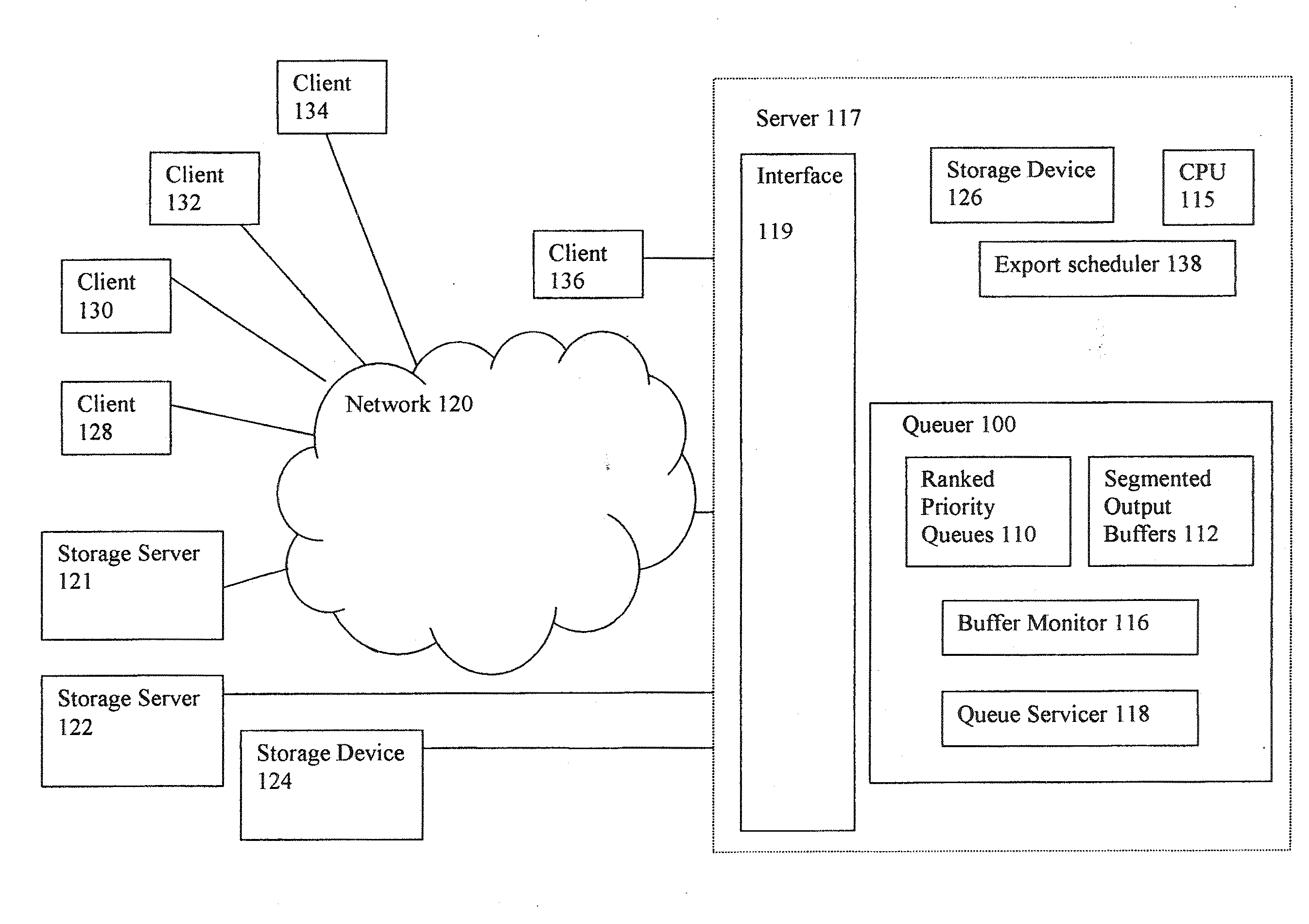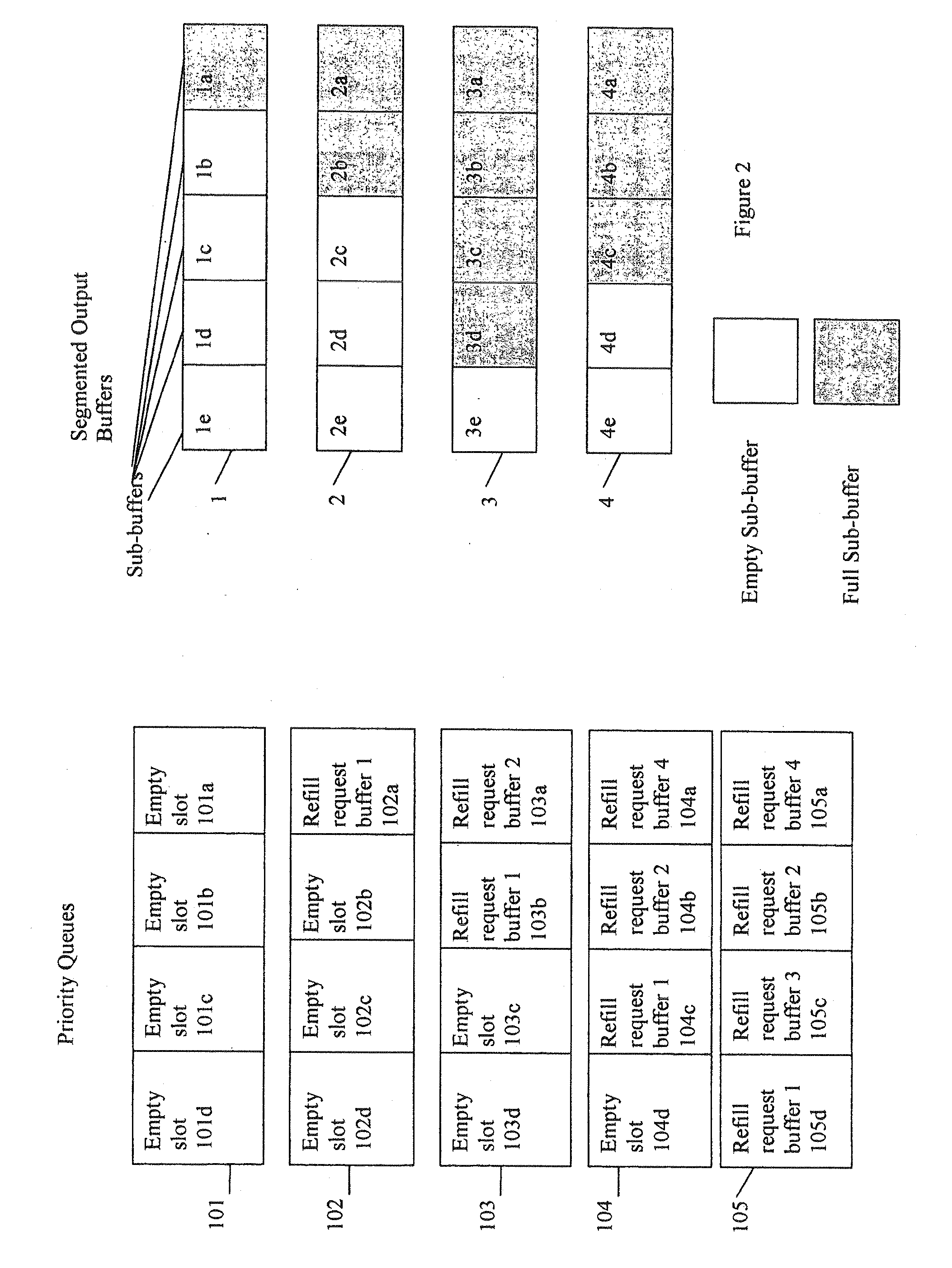Apparatus and method for priority queuing with segmented buffers
a buffer and priority technology, applied in electrical equipment, digital transmission, data switching networks, etc., can solve the problems of reducing overall throughput and running the risk of starving some requesters, and achieve the effect of reducing the possibility of starvation
- Summary
- Abstract
- Description
- Claims
- Application Information
AI Technical Summary
Benefits of technology
Problems solved by technology
Method used
Image
Examples
example 1
[0016]For example, when sub-buffer 3e became empty, segmented output buffer 3 held one empty sub-buffer (3e) and a refill request was enqueued in priority queue 105; slot 105c holds this refill request; if slot 3d were to become empty, leaving two empty sub-buffers (3d and 3e) in segmented output buffer 3, a refill request would then be registered in an empty slot (104d) in priority queue 104.
example 2
[0017]For example, when sub-buffer 4d became empty, segmented output buffer 4 held two empty sub-buffers (4d and 4e) and a refill request was enqueued in priority queue 104; slot 104a holds this refill request.
example 3
[0018]For example, when sub-buffer 2c became empty, segmented output buffer 2 held A empty sub-buffers (2c-e) and refill request was enqueued in priority queue 103; slot 103a holds this request.
[0019]In the example illustrated in FIG. 2, the segmented output buffers (1, 2, 3, and 4) all have the same number of sub-buffers (1a-e, 2a-e, 3a-e or 4a-e) and the total number of priority queues (101, 102, 103, 104 and 105) corresponds to the maximum possible number of empty sub-buffers in a segmented output buffer; in this case, there are five sub-buffers (1a-e, 2a-e, 3a-e or 4a-e) per segmented output buffer (1, 2, 3, and 4) and five corresponding priority queues (101, 102, 103, 104 and 105). However, in other examples, the number of sub-buffers per segmented output buffer may or may not vary and the number of priority queues may or may not match the maximum number of empty sub-buffers per segmented output buffer. For example, in some cases, the number of ranked priority queues may be les...
PUM
 Login to View More
Login to View More Abstract
Description
Claims
Application Information
 Login to View More
Login to View More - R&D
- Intellectual Property
- Life Sciences
- Materials
- Tech Scout
- Unparalleled Data Quality
- Higher Quality Content
- 60% Fewer Hallucinations
Browse by: Latest US Patents, China's latest patents, Technical Efficacy Thesaurus, Application Domain, Technology Topic, Popular Technical Reports.
© 2025 PatSnap. All rights reserved.Legal|Privacy policy|Modern Slavery Act Transparency Statement|Sitemap|About US| Contact US: help@patsnap.com



